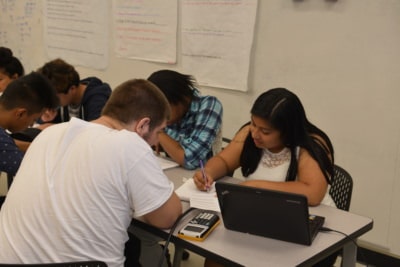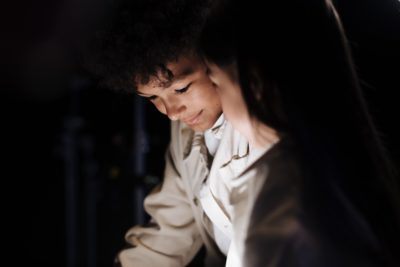
Editor’s Note: The following is the second in a series of three Perspectives from the Social Institute about artificial intelligence.
As we saw in the first piece of this series on how students are impacted by the surge of artificial intelligence (AI), AI can show up in nearly any aspect of a student’s day. With the popularity and easy accessibility of ChatGPT, it has become especially relevant in creating content that challenges what it means to be creative, unique, and honest. Even the artwork that won first place at the Colorado State Fair was generated with AI.
State fairs might be one thing, but when it comes to AI in the classroom, this new tech is leaving many teachers and students confused and overwhelmed. This leads educators to question if there are ways school communities can harness this innovative technology, while not having it cross into plagiarism. It makes us stop and think: where do we draw the line?
Let’s dive into statistics that shed light on how educators and students feel about the ethics around AI and how we can empower our students to play to their core values and make high-character decisions while navigating AI.
The truth behind AI use in education
A Study.com survey reveals a significant figure: 89% of student respondents admit to using ChatGPT for homework. On the other hand, incidents have arisen where student are wrongly accused of using AI to complete assignments.
Neuroscience News reports that 70% of educators believe the use of AI in assignments constitutes plagiarism, showing how many teachers are worried about how AI might change the way students do their schoolwork. And yet, Education Week notes a noteworthy trend — teachers are using ChatGPT more than students. In fact, when the Social Institute polled 10th-graders about their experience with ChatGPT, 77% said they had tried it only once or twice or had heard about it but never used it.
Conflicting statistics and perceptions like these are the reason many school districts announced bans on ChatGPT in early 2023, only to roll them back a few months later. It also reveals that school communities have an opportunity to empower both educators and students to unleash the power of AI in their classrooms in ethical ways to enhance the learning experience. But how?
Harnessing AI for good in the classroom
In a 2023 study, Quizlet revealed the top ways educators who responded are using AI: research (44%), creating lesson plans (38%), summarizing information (38%), and generating classroom materials like tests and assignments (37%).
As the education sector has been hit hard by the “great resignation” and early retirements, educators who have stayed in the profession are taking on more responsibilities than ever. So it makes sense that they are turning to technology like AI to support their work.
Similarly, students are feeling overwhelmed by juggling test anxiety, school work, extracurricular activities, and after-school jobs. And more are turning to ChatGPT. According to the Social Institute’s 2024 Student Insights Report, high schoolers revealed that the top way they would use ChatGPT if allowed would be to double-check their homework assignments.
As the college admissions process becomes more and more competitive, it makes sense that students are turning to tech to help them get better grades.
Setting a positive example of AI-Use
If this past year has taught us anything, it’s that AI is here to stay. So how can we ensure that students navigate it with integrity and avoid plagiarism?
Educators play a key role in setting the stage for ethical AI use. Consider setting clear guidelines for use on schoolwork and exams, as well as setting a clear example for students by showing them how you incorporate AI into lessons. This can look like showing students how to use AI to check their spelling and grammar or teaching students how to create practice problems with AI to study for tests.
Through a positive and proactive approach that involves open discussions, the establishment of clear guidelines, and focusing on responsible AI use, educators can empower students to use AI as a beneficial educational tool.
Go here to learn more or schedule a demo about #WinAtSocial, our collaborative learning platform, and its positive approach to equipping students with modern life skills that empower them to navigate social media and tech, like artificial intelligence, in high-character ways.
Recommended reading



